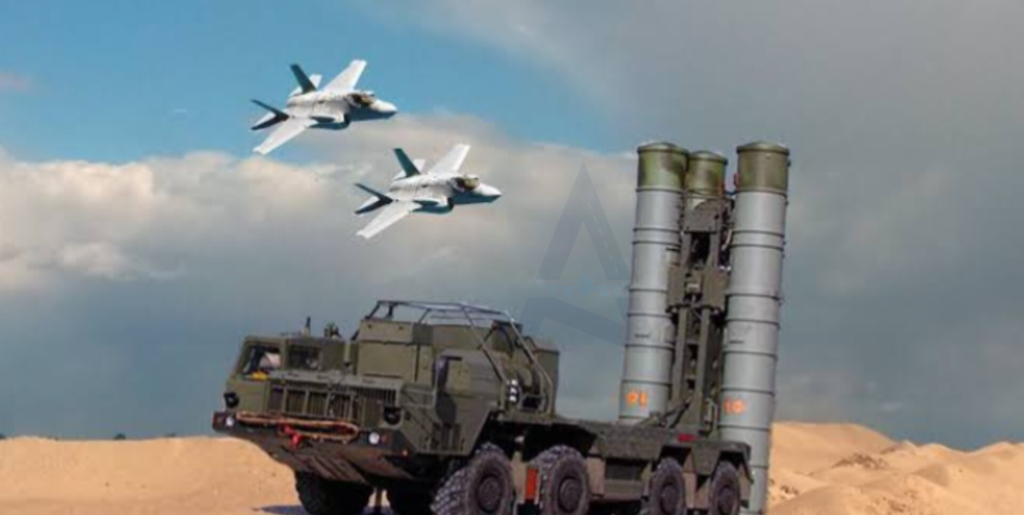India’s defense strategy has taken a notable turn with its decision to prioritize the procurement of advanced air defense systems, such as the S-400, over the acquisition of stealth fighter jets like the F-35. This decision reflects India’s evolving security landscape, technological considerations, and geopolitical dynamics.
The S-400 air defense system, developed by Russia, is considered one of the most advanced in the world. It boasts a multi-layered defense capability, capable of detecting and engaging various aerial threats, including aircraft, drones, and ballistic missiles at ranges of up to 400 kilometers. For India, which faces complex security challenges, particularly from its neighbors, investing in a robust air defense system is paramount to safeguarding its airspace and enhancing its military deterrence.
One of the primary reasons behind India’s focus on the S-400 is the need for immediate and effective aerial defense capabilities. The S-400 system can be integrated with existing military infrastructure, providing a significant boost to India’s air defense posture. The growing threats from both Pakistan and China, coupled with the advancements in their respective aerial capabilities, have compelled India to bolster its defense capabilities quickly. The S-400 offers a comprehensive solution that can be operationalized more rapidly compared to the longer acquisition and integration timeline associated with advanced fighter jets like the F-35.
Moreover, while the F-35 represents cutting-edge stealth technology and advanced avionics, its procurement is mired in complex geopolitical and operational considerations. The F-35 program is part of the U.S. military’s broader strategy, and procurement involves not only financial costs but also extensive negotiations regarding technology transfer, maintenance, and operational integration with U.S. forces. For India, which has been developing its indigenous defense manufacturing capabilities, the choice of the S-400 reflects a desire for a more autonomous defense strategy without the constraints associated with foreign fighter jet acquisitions.
India’s decision to prioritize the S-400 also stems from the need to establish a credible deterrent against adversaries with superior aerial capabilities. The S-400’s advanced radar and missile systems allow for the interception of various aerial threats, thereby significantly enhancing India’s air defense network. This move is particularly important in the context of India’s ongoing border tensions with China, especially following the standoff in Ladakh, where both countries have bolstered their military presence.
Additionally, the S-400 procurement aligns with India’s “Make in India” initiative, as it opens avenues for collaboration with Russian defense industries in developing and enhancing domestic air defense systems. This partnership not only strengthens India’s strategic defense ties with Russia but also aids in developing indigenous technologies and capabilities.
Another factor influencing India’s decision is the strategic partnership it is cultivating with Russia. The S-400 deal, signed in 2018, underscores India’s long-standing defense relationship with Russia, which has been a reliable supplier of military hardware for decades. Despite potential sanctions from the U.S. under the Countering America’s Adversaries Through Sanctions Act (CAATSA), India has proceeded with the S-400 acquisition, prioritizing its national security needs over geopolitical pressures.
In contrast, the F-35 program, despite its impressive capabilities, has been perceived as a long-term investment with uncertain timelines and operational readiness. Integrating such advanced systems into India’s existing force structure would require substantial investment in infrastructure, training, and support systems, potentially delaying operational effectiveness.
While the F-35 offers stealth and advanced combat capabilities, the immediate need for air defense against a variety of threats makes the S-400 a more strategic choice for India at this juncture. The focus on enhancing air defense capabilities demonstrates India’s pragmatic approach to national security, prioritizing systems that can deliver immediate operational advantages in an increasingly complex regional security environment.
In conclusion, India’s decision to choose advanced air defense systems like the S-400 over stealth jets such as the F-35 highlights the country’s need for immediate and effective defense capabilities. With rising regional threats and the imperative for strategic autonomy, the S-400 acquisition represents a calculated move to bolster India’s defense posture and safeguard its national security interests in a rapidly evolving geopolitical landscape.
